If you’re a Harley-Davidson owner, you’re probably familiar with the automatic primary chain tensioner. This device is responsible for keeping your primary chain at the correct tension, which is critical for proper engine performance. Unfortunately, there have been reports of problems with the automatic primary chain tensioner on some Harley models. In this article, we’ll take a closer look at these issues and what you can do to prevent or fix them.
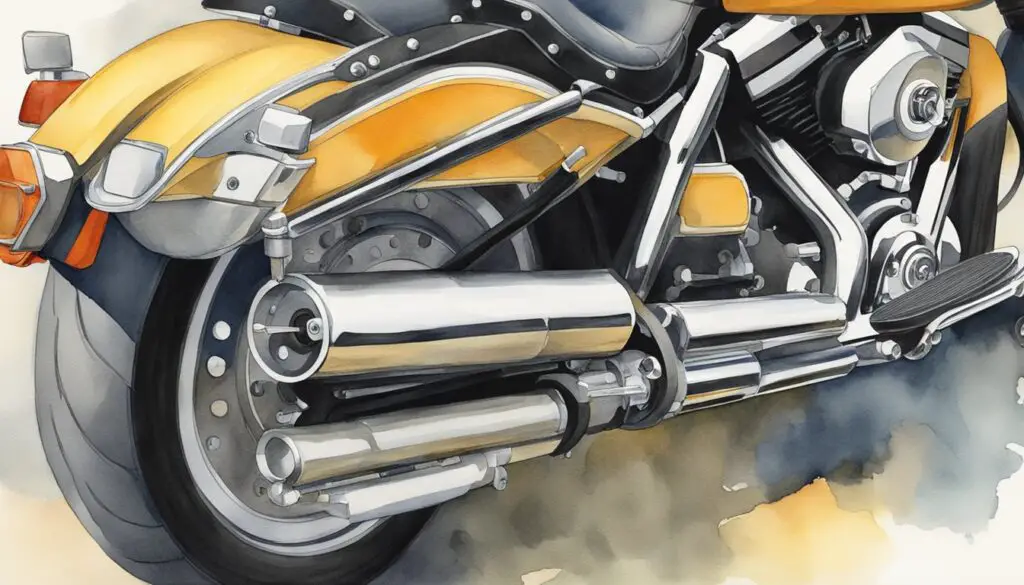
One of the most common problems with the automatic primary chain tensioner is over-tightening of the primary chain. This can cause a range of issues, including unusual noise, increased vibration, poor engine performance, and even damage to the engine. There have been reports of this problem on models with the Evo, Twin Cam, and Milwaukee 8 engines. If you’re experiencing any of these symptoms, it’s important to have your tensioner inspected as soon as possible.
Fortunately, there are steps you can take to prevent or fix problems with your Harley’s automatic primary chain tensioner. Regular maintenance and inspection can help catch issues before they become serious. And if you do need to repair or replace your tensioner, there are a variety of solutions available. In the following sections, we’ll take a closer look at these topics and provide you with the information you need to keep your Harley running smoothly.
Key Takeaways
- The automatic primary chain tensioner on some Harley models has been known to over-tighten the primary chain, causing a range of issues.
- Regular maintenance and inspection can help prevent or catch issues with your tensioner before they become serious.
- If you do need to repair or replace your tensioner, there are a variety of solutions available.
Understanding Primary Chain Tensioners
If you own a Harley Davidson motorcycle, you know how important it is to keep your bike in good condition. One of the most critical components of your bike’s engine is the primary chain tensioner. This device is responsible for maintaining the correct tension on your bike’s primary chain, which is essential for smooth and efficient engine performance. In this section, we will discuss the role of the automatic primary chain tensioner and the different types of tensioners available in Harley models.
Role of the Automatic Primary Chain Tensioner
The automatic primary chain tensioner is a device that is designed to keep the primary chain at the correct tension. The primary chain is responsible for transferring power from the engine to the transmission, so it is essential that it is kept at the correct tension. The automatic tensioner works by using a spring-loaded mechanism to maintain the correct tension on the chain. This means that the tensioner will automatically adjust to changes in the chain’s tension as the engine is running.
Types of Tensioners in Harley Models
There are two types of primary chain tensioners available in Harley Davidson motorcycles: automatic and manual. The automatic tensioner is the most commonly used type of tensioner in modern Harley models. It is designed to automatically adjust the tension on the chain as the engine is running. This means that you don’t have to manually adjust the tension on the chain, which can be a time-consuming and challenging task.
The manual tensioner is an older type of tensioner that requires manual adjustment. This type of tensioner is not commonly used in modern Harley models, but it is still available for older models. With a manual tensioner, you will need to adjust the tension on the chain periodically to ensure that it is at the correct tension.
In conclusion, understanding the primary chain tensioner is essential if you want to keep your Harley Davidson motorcycle running smoothly. Whether you have an automatic or manual tensioner, it is essential to ensure that the chain is at the correct tension to avoid any issues with engine performance.
Common Issues with Harley Automatic Primary Chain Tensioners
If you are a Harley Davidson motorcycle owner, you may have heard about the issues with automatic primary chain tensioners. While these parts are designed to maintain optimal chain tension, they can sometimes apply excessive pressure onto the chain, causing premature wear and tear of both the chain and the engine’s bearings.
Excessive Tightness and Engine Damage
One of the most common problems with Harley automatic primary chain tensioners is excessive tightness. This can lead to engine damage, as the tight primary chain can cause undue stress on the motor’s bearings. Over time, this can lead to significant engine issues, and in some cases, complete engine failure.
Symptoms of Tensioner Problems
There are several symptoms that can indicate a problem with your Harley’s automatic primary chain tensioner. These include unusual noise, increased vibration, poor engine performance, and oil contamination. If you notice any of these symptoms, it’s essential to have your motorcycle inspected by a qualified mechanic.
Impact on Motorcycle Performance
In addition to potential engine damage, a tight primary chain can also impact your motorcycle’s performance. A chain that is too tight can cause increased friction, leading to decreased fuel efficiency and acceleration. It can also cause excessive wear on the chain, leading to the need for more frequent maintenance and replacement.
In conclusion, while Harley automatic primary chain tensioners are designed to maintain optimal chain tension, they can sometimes cause more harm than good. If you notice any symptoms of tensioner problems, it’s essential to have your motorcycle inspected by a qualified mechanic. By addressing these issues early, you can help prevent significant engine damage and ensure that your motorcycle performs at its best.
Diagnosing Tensioner Problems
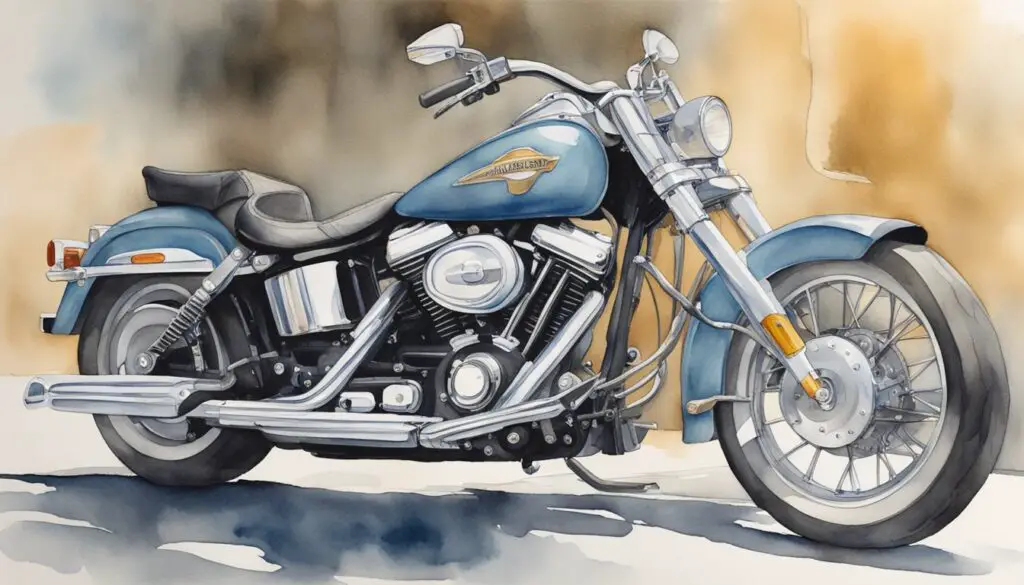
If you are experiencing issues with your Harley Davidson motorcycle, it may be due to a faulty automatic primary chain tensioner. In this section, we will discuss how to diagnose tensioner problems.
Inspecting for Wear and Tear
One of the first things you should do when diagnosing tensioner problems is to inspect the tensioner for wear and tear. Over time, the tensioner can become worn or damaged, leading to problems with the primary chain. Check for signs of wear such as cracks, chips, or other damage to the tensioner.
Identifying Unusual Noises
Unusual noises coming from your motorcycle can be a sign of a faulty tensioner. Listen for any clicking, grinding, or other unusual sounds coming from the primary chain area. If you hear any unusual noises, it may be time to have your tensioner inspected by a mechanic.
Assessing Chain Slack and Alignment
Another way to diagnose tensioner problems is to assess the chain slack and alignment. A loose or misaligned chain can cause problems with the tensioner, leading to premature wear and damage. Check the chain slack and alignment using the manufacturer’s specifications. If the chain is loose or misaligned, it may be time to have your tensioner adjusted or replaced.
In conclusion, diagnosing tensioner problems requires a thorough inspection of the tensioner, listening for unusual noises, and assessing chain slack and alignment. If you suspect that your tensioner is faulty, it is important to have it inspected by a qualified mechanic.
Maintenance and Prevention
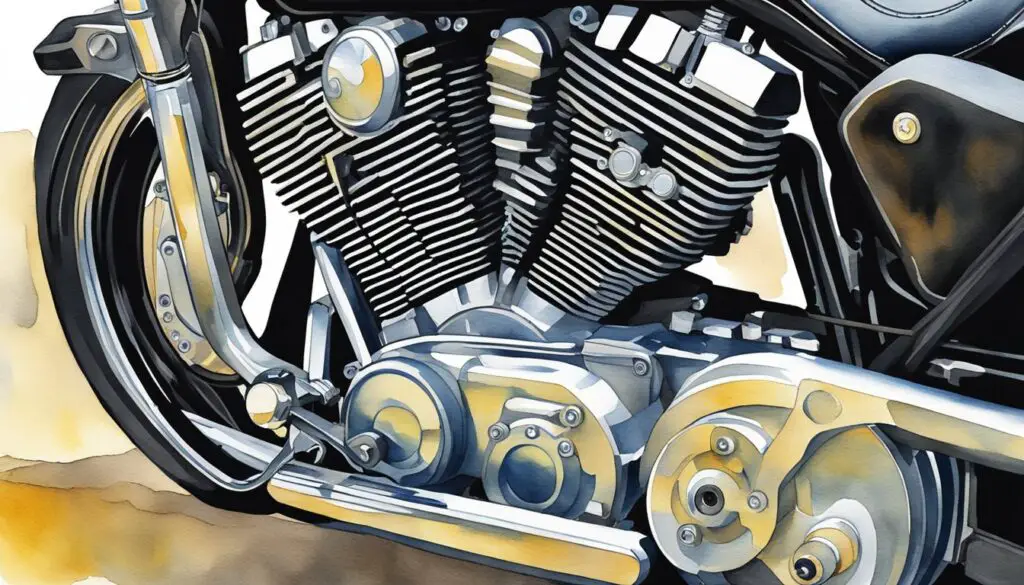
Regular maintenance is crucial for the longevity of your Harley Davidson motorcycle. One of the most important components to maintain is the automatic primary chain tensioner. Proper maintenance can prevent issues with the tensioner and ensure that your motorcycle runs smoothly.
Regular Maintenance for Longevity
To prevent issues with the automatic primary chain tensioner, it is essential to perform regular maintenance. This includes checking the tensioner for wear and tear, as well as ensuring that it is properly lubricated. Regular maintenance can help prevent the tensioner from over-tightening the primary chain, which can lead to a range of issues.
Adjustment and Proper Tension
Adjusting the tensioner and ensuring that it is properly tensioned is also critical. The tensioner should be adjusted according to the manufacturer’s specifications, and the primary chain should have the correct amount of tension. Too much tension can cause the tensioner to over-tighten the chain, while too little tension can cause the chain to slip and damage the tensioner.
When to Consult a Professional Mechanic
If you are not a qualified technician or professional mechanic, it may be best to consult with one to ensure that the tensioner is properly maintained and adjusted. A professional mechanic can help you identify any issues with the tensioner and provide recommendations for proper maintenance and adjustment.
Overall, regular maintenance and proper adjustment are essential for preventing issues with the automatic primary chain tensioner on your Harley Davidson motorcycle. By following these steps and consulting with a professional mechanic when necessary, you can help ensure that your motorcycle runs smoothly and lasts for years to come.
Repair and Replacement Solutions
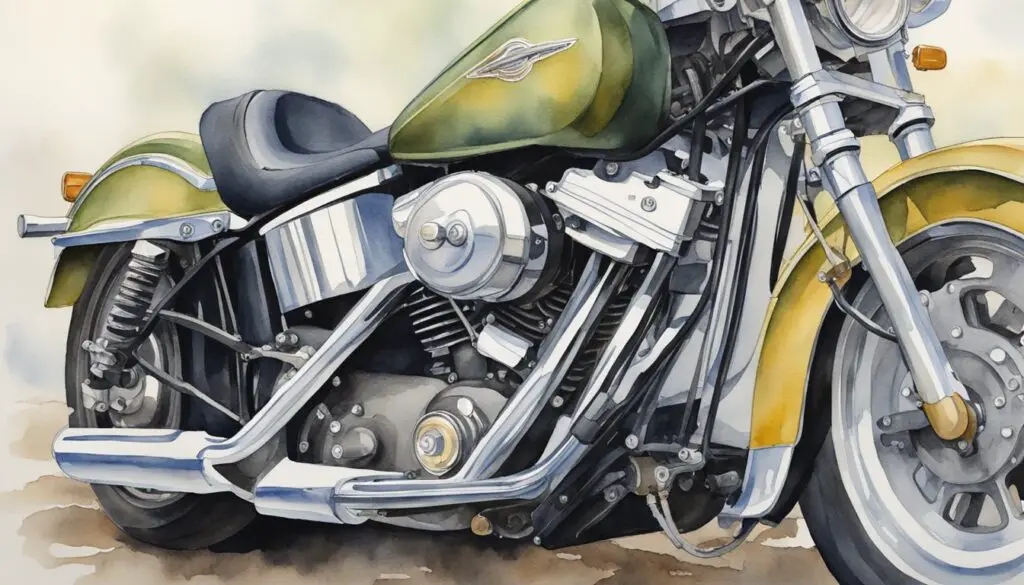
If you are experiencing issues with your Harley’s automatic primary chain tensioner, there are a few repair and replacement solutions that you can consider. Here are some of the most common ones:
Fixing Common Tensioner Issues
Before you jump to replacing the tensioner, there are a few common issues that you can try to fix. One of the most common issues is over-tightening of the primary chain, which can lead to increased vibration and poor engine performance. To fix this, you can adjust the tensioner in its place using a tensioner wrench to tighten the bolts and screws around it. This should help alleviate the issue.
Another common issue is premature wear of the chain, which can cause unwanted vibration on shafts, bearings, and seals. To fix this, you can try installing a new chain that is designed to withstand the stress of the automatic tensioner. This can help improve the overall performance of your Harley.
Upgrade Options for Reliability
If you are looking for a more reliable solution, you can consider upgrading your automatic primary chain tensioner. There are many aftermarket options available that are designed to provide better performance and reliability than the stock tensioner. Some of the most popular options include hydraulic tensioners, which are designed to provide a more consistent and reliable tension on the chain.
Cost Considerations for Tensioner Repairs
When it comes to repairing or replacing your automatic primary chain tensioner, cost is always a consideration. If you are experiencing issues with your tensioner, it is important to weigh the cost of repairs against the cost of a replacement. In some cases, it may be more cost-effective to replace the tensioner rather than repairing it, especially if the repairs are costly and time-consuming.
Overall, there are many repair and replacement solutions available for Harley automatic primary chain tensioner problems. By considering the different options and weighing the costs and benefits, you can find a solution that works best for you and your Harley.
Understanding Specific Model Concerns

If you have a Harley Davidson motorcycle, you may have experienced issues with the automatic primary chain tensioner. These issues can vary depending on the engine and model of your bike. In this section, we will explore the specific model concerns related to the automatic primary chain tensioner.
Tensioner Issues in Different Harley Engines
The automatic primary chain tensioner problems have been reported on different Harley engines, including the Evo, Twin Cam, and Milwaukee 8 engines. The Milwaukee 8 engine is prominent in Harley motorcycles and has reported issues with the automatic primary chain tensioner. This problem primarily affects models from 2017 onwards, including Harley Davidson Touring models, Softail models, and some CVO models.
Model-Specific Tensioner Revisions
Harley Davidson has made revisions to the automatic primary chain tensioner on different models. For example, the Dyna models equipped with Twin Cam engines have a revised tensioner that has a larger oil reservoir to help keep the tensioner lubricated. The Sportster models also have a revised tensioner that is designed to reduce the risk of oil contamination.
If you have a Harley Davidson Touring model, you may have noticed that the automatic primary chain tensioner has been revised to address the reported issues. The revised tensioner is designed to provide more consistent tension and reduce the risk of oil contamination.
In summary, the automatic primary chain tensioner problems can vary depending on the engine and model of your Harley Davidson motorcycle. It is important to understand the specific concerns related to your bike and take appropriate measures to address them. If you are experiencing any issues with the automatic primary chain tensioner, it is recommended to consult with a certified Harley Davidson mechanic to ensure proper diagnosis and repair.
Frequently Asked Questions
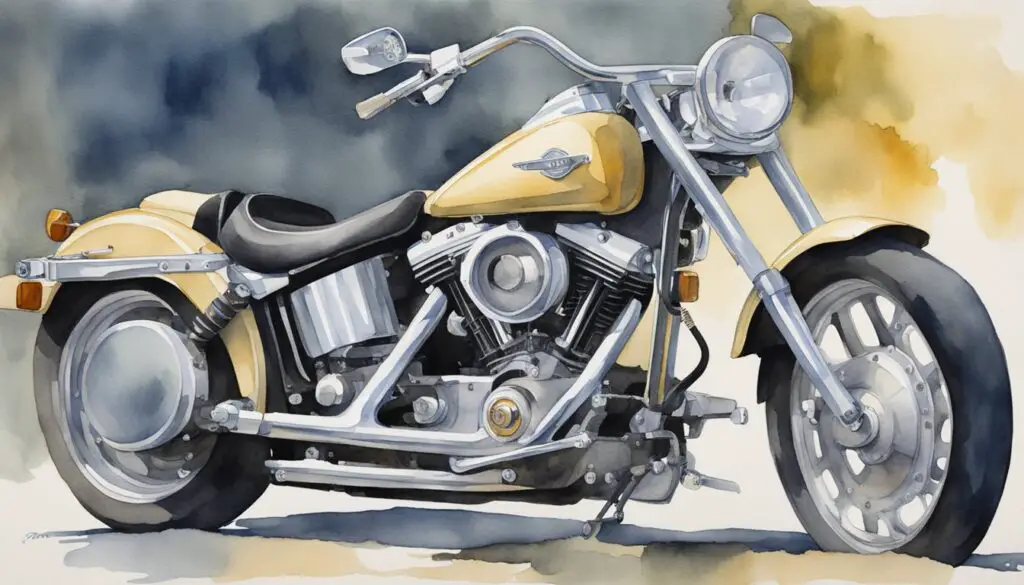
What are common symptoms of a failing primary chain tensioner on a Harley?
If your Harley’s primary chain tensioner is failing, you may notice unusual noise, increased vibration, poor engine performance, and difficulty shifting gears. These symptoms can be caused by the tensioner over-tightening the primary chain, which can lead to a range of issues.
How often should the primary chain tensioner be replaced on a Harley motorcycle?
The frequency of primary chain tensioner replacement on a Harley motorcycle depends on a number of factors, including the age of the bike, the type of engine, and your riding style. In general, it’s a good idea to have your primary chain tensioner checked by a qualified mechanic at least once a year, or more often if you ride frequently or in extreme conditions.
Are there any known issues with the Hayden primary chain tensioner on Harley models?
The Hayden primary chain tensioner is a popular aftermarket replacement for the stock tensioner on Harley Davidson motorcycles. While there have been some reports of issues with the Hayden tensioner, many riders find it to be a reliable and effective upgrade.
What steps are involved in replacing the primary chain tensioner on a Harley?
Replacing the primary chain tensioner on a Harley motorcycle can be a complex process, and it’s generally best left to a qualified mechanic. The process typically involves removing the outer primary cover, draining the oil, removing the old tensioner, installing the new tensioner, and reassembling the primary cover and other components.
Can an automatic primary chain tensioner cause damage to the engine if it fails?
Yes, if an automatic primary chain tensioner fails, it can cause damage to the engine. This is because the tensioner is responsible for maintaining proper tension on the primary chain, which is a critical component of the engine’s operation. If the chain becomes too loose or too tight, it can cause a range of problems, including engine damage and chain failure.
Is it possible to manually adjust a Harley’s automatic primary chain tensioner, or is it self-adjusting?
Harley’s automatic primary chain tensioner is designed to be self-adjusting, which means that it should maintain proper tension on the primary chain without any manual intervention. However, if you suspect that the tensioner is not functioning properly, it’s important to have it checked by a qualified mechanic. Attempting to manually adjust the tensioner can cause damage to the engine or other components.

Leave a Reply